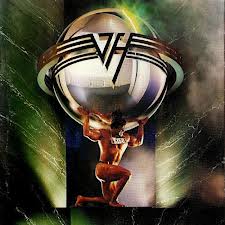
5150 (1986)

1. Good Enough
2. Why Can't This Be Love
3. Get Up
4. Dreams
5. Summer Nights
6. Best of Both Worlds
7. Love Walks In
8. 5150
9. Inside
With this release, the “Van Halen Soap Opera” truly began. Accounts differ, but it’s generally agreed that David Lee Roth either quit or was fired over creative differences. Roth wanted to keep the band’s party-rock image intact, while Eddie Van Halen — guitarist and de facto leader — sought a more serious musical direction. The departure of one of rock’s most flamboyant frontmen left an obvious question: how do you carry on? Fortunately, the band found an ideal replacement in Sammy Hagar. He wasn’t a Roth clone — in fact, that was the point. Hagar brought his own wild streak, with a résumé that included a string of moderately successful solo albums and a stint fronting Montrose, but he was less overbearing on stage, a stronger vocalist, and a capable songwriter. By this point, Roth’s schtick may have run its course anyway; his solo career launched alongside this album with a sound and image that closely mirrored Van Halen’s, but apart from a few humorous videos early on, he quickly faded from prominence.
So how did the new era start? Surprisingly well. With Hagar, the band managed to adjust both sound and brand while retaining their loyal following. Purists grumbled, but that wouldn’t become a major chorus for another decade — about the time nostalgia for Roth set in. Ironically, the songs that most closely mimic the “classic” Van Halen style are the least effective here. Good Enough, Get Up, and the rather clumsy closer Inside all hit the familiar over-the-top lyrical and musical beats, but feel a little worn-out by this stage.
The real strength lies in the tracks that venture into new territory. Why Can’t This Be Love, The Best of Both Worlds, Dreams, and When It’s Love showcase a more melodic side without losing the crunch that defines the band. Dreams may be too polished for hard-core fans, but Hagar’s soaring vocals take it somewhere Roth could never have carried it.
Several of these songs were turned into videos and became MTV staples. Visually, the band had simplified — gone were the costume changes and excessive flash — but the footage of them tearing it up on stage proved they didn’t need theatrics to make an impact. It was clear that this was a solid new direction, and a strong start to “Part Two” of the Van Halen story.
Go back to the main page
Go To Next Review